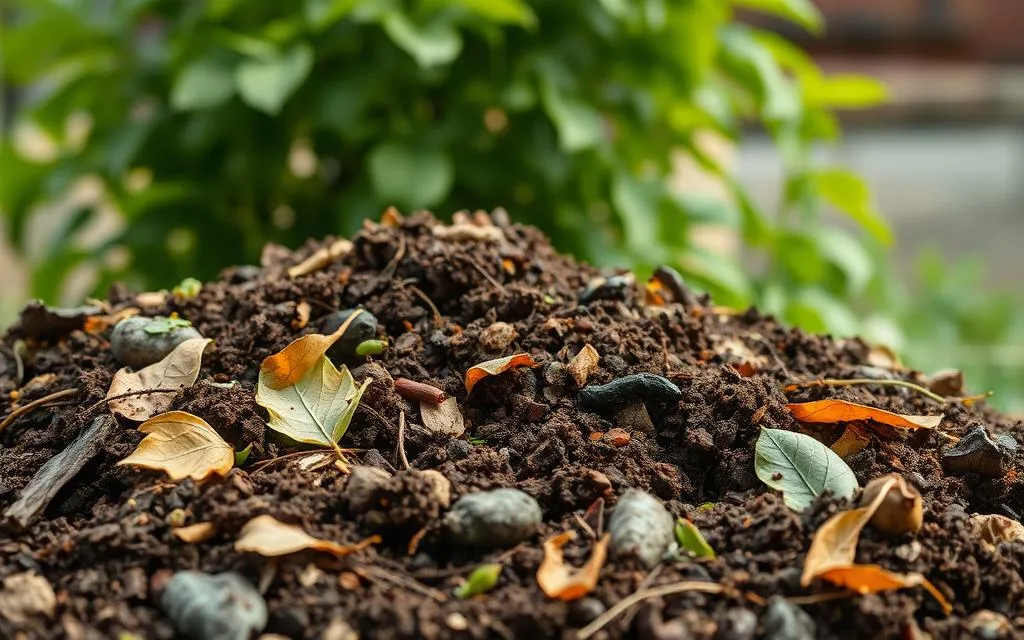Learn how to start living a green lifestyle today with practical tips like reducing waste, conserving energy, and embracing sustainable habits.
Have you ever wondered how small lifestyle changes can make a big difference for the planet? The journey toward sustainability doesn’t have to be overwhelming.
Whether you’re a seasoned eco-warrior or someone just starting, understanding how to start living a green lifestyle today can set you on a path to meaningful change.
This guide dives deep into practical steps that you can take right now to reduce your carbon footprint, live more sustainably, and contribute to a healthier Earth.
Table of Contents
ToggleHow to Start Living a Green Lifestyle
Transitioning to a green lifestyle involves thoughtful choices in every aspect of your life. Let’s explore ten actionable steps to begin your eco-friendly journey.
1. Reduce, Reuse, Recycle
This classic mantra remains the foundation of a green lifestyle. But how do you effectively incorporate it into your daily life?
Why Reduce Matters
Reducing waste starts with mindful consumption. Choose products with minimal packaging, say no to single-use plastics, and avoid unnecessary purchases. By reducing waste at its source, you help limit landfill overflow and save resources.
Creative Ways to Reuse
Instead of discarding items, think creatively about how they can be reused. Glass jars can become storage containers, old clothes can be repurposed as cleaning rags, and furniture can be refurbished instead of replaced.
Recycle Smartly
Recycling isn’t just about throwing things in a blue bin. Learn the rules for your local recycling program and ensure items are cleaned and sorted correctly. Electronics, batteries, and certain plastics require special handling, so research drop-off locations in your area.
2. Conserve Energy
Energy conservation is a crucial component of sustainable living. But where do you begin?
Upgrade to Energy-Efficient Appliances
Invest in appliances with ENERGY STAR ratings, which use significantly less power. Switching to LED light bulbs can also make a noticeable difference in your energy bills.
Be Mindful of Usage
Turn off lights, unplug devices when not in use, and use timers for outdoor lighting. Simple habits like these can save energy and reduce your utility costs.
Harness Renewable Energy
If possible, consider installing solar panels or using green energy providers. While the upfront cost may be high, the long-term benefits for the environment—and your wallet—are worth it.
3. Choose Sustainable Transportation
Your daily commute plays a significant role in your carbon footprint. Here’s how to make greener choices.
Walk or Bike When Possible
Short trips can often be completed without a car. Walking or cycling not only reduces emissions but also promotes physical health.
Carpool and Use Public Transit
Sharing rides or taking buses and trains significantly lowers the number of vehicles on the road. It’s a win for the environment and your wallet.
Consider Electric Vehicles
If you’re in the market for a new car, explore electric or hybrid models. These vehicles produce fewer emissions and are becoming increasingly accessible.
4. Support Eco-Friendly Brands

Your purchasing power can influence the market. How do you ensure you’re supporting the right companies?
Look for Certifications
Seek out brands with certifications like Fair Trade, Organic, or Cruelty-Free. These labels ensure that the company meets strict environmental and ethical standards.
Shop Local
Supporting local businesses reduces the carbon footprint associated with shipping and transportation. Plus, it fosters community growth.
Research Companies
Take the time to learn about a brand’s sustainability practices. Many companies publish sustainability reports that detail their impact on the environment.
5. Eat Responsibly
What you eat affects the planet. Small dietary changes can make a big impact.
Reduce Meat Consumption
Livestock farming is a major contributor to greenhouse gas emissions. Incorporate more plant-based meals into your diet to lower your environmental impact.
Choose Seasonal and Local Produce
Buying fruits and vegetables in season reduces the need for long transportation. Support local farmers by purchasing from markets or joining a community-supported agriculture (CSA) program.
Minimize Food Waste
Plan meals, store food properly, and compost scraps to cut down on waste. Leftovers can often be repurposed into new dishes.
6. Save Water
Water is a precious resource that should never be taken for granted.
Fix Leaks Immediately
A dripping faucet might seem minor, but it can waste gallons of water over time. Regularly inspect and repair plumbing issues.
Install Low-Flow Fixtures
Low-flow showerheads and faucets reduce water usage without compromising performance. Many modern designs are both eco-friendly and stylish.
Adopt Water-Saving Habits
Turn off the tap while brushing your teeth, use a broom instead of a hose to clean driveways, and collect rainwater for outdoor use.
7. Avoid Fast Fashion
The fashion industry is one of the largest polluters. Here’s how to dress sustainably.
Invest in Quality, Not Quantity
Choose durable clothing that lasts longer. Fast fashion often falls apart quickly, leading to more waste.
Shop Second-Hand
Thrift stores are treasure troves for unique and affordable clothing. By shopping second-hand, you give garments a second life.
Support Ethical Brands
Seek out brands that prioritize sustainable materials, ethical labor practices, and transparent operations.
8. Embrace Green Cleaning
Your cleaning routine can be both effective and eco-friendly by embracing green alternatives. Small changes in the way you clean can significantly reduce harmful chemicals in your home and lessen your environmental footprint.
Use Natural Products
Many commercial cleaning products contain toxic chemicals that can harm both your health and the environment.
By switching to natural options like vinegar, baking soda, and essential oils, you can achieve the same level of cleanliness without the negative effects.
Vinegar is a versatile cleaner that can disinfect surfaces and remove stubborn stains, while baking soda excels as a gentle abrasive for scrubbing grime. Essential oils like lavender or tea tree not only add a pleasant aroma but also have natural antibacterial properties, making them an excellent addition to your homemade cleaners.
Avoid Disposable Cleaning Supplies
Disposable cleaning items like paper towels and single-use wipes are convenient but create a significant amount of waste. Instead, opt for reusable microfiber cloths, which are effective for trapping dirt and bacteria and can be washed and reused countless times. Reusable mops and sponges also minimize waste, and they often outperform their disposable counterparts in durability and efficiency. This small shift reduces landfill waste and saves money in the long run.
DIY Cleaning Solutions
Making your own cleaning products is not only eco-friendly but also cost-effective. Many DIY recipes use common household ingredients, making them easy to prepare.
For instance, a simple all-purpose cleaner can be made by mixing equal parts water and vinegar with a few drops of essential oil.
For tougher tasks, a paste made of baking soda and water works wonders on greasy surfaces and bathroom tiles. By creating your own cleaning solutions, you reduce reliance on single-use plastic containers and harmful chemicals.
9. Plant Something
Gardening is one of the simplest yet most impactful ways to contribute to a greener planet. Whether you start small or dream big, planting something offers countless benefits for both the environment and your well-being.
Start a Home Garden
A home garden is not only a source of fresh and healthy produce but also a step toward reducing your environmental impact.
By growing your own vegetables, herbs, or fruits, you can avoid the environmental costs associated with transporting and packaging store-bought goods.
Additionally, having a garden encourages composting, which helps turn food scraps into nutrient-rich soil for your plants. Even if you don’t have outdoor space, container gardening on a balcony or windowsill can still make a difference.
Plant Trees
Trees are essential for combating climate change. They absorb carbon dioxide, provide oxygen, and act as natural air filters. Planting trees in your yard or joining community tree-planting initiatives is a powerful way to contribute to the environment.
Besides their ecological benefits, trees provide shade that can reduce cooling costs in summer, making them a practical and aesthetic addition to your property.
Support Urban Green Spaces
Green spaces in cities improve air quality, promote biodiversity, and offer residents a connection to nature. By participating in community gardening projects, volunteering at local parks, or advocating for the creation of more green spaces, you can help make your neighborhood more sustainable. These areas not only benefit the environment but also serve as community hubs that foster social connections.
10. Educate Yourself & Advocate
Knowledge is a vital tool for driving change. By educating yourself and others, you can amplify your impact and inspire collective action for a sustainable future.
Stay Informed
The journey to sustainable living begins with staying informed about environmental issues. Dive into books, documentaries, and articles that focus on topics like climate change, renewable energy, and waste reduction.
Follow trusted environmental organizations on social media to stay updated on the latest developments. The more you learn, the more equipped you’ll be to make meaningful changes in your own life and advocate for broader change.
Engage in Conversations
Talking about green living with friends, family, and colleagues can spark interest and inspire others to take action. Share your experiences, challenges, and successes to make the topic relatable.
For example, discussing how switching to reusable grocery bags reduced your plastic waste can encourage someone else to adopt the same habit. These conversations can create a ripple effect, turning small changes into a collective movement.
Support Policies and Movements
Beyond individual actions, systemic change is necessary for a sustainable future. Support policies and initiatives that promote renewable energy, waste reduction, and environmental conservation.
Sign petitions, attend rallies, and vote for leaders who prioritize sustainability. Your voice matters, and by advocating for eco-friendly policies, you contribute to creating a better world for future generations.
Conclusion
Living green isn’t about perfection—it’s about progress. By taking these steps, you not only reduce your environmental footprint but also inspire others to join the cause.
Start small, stay consistent, and celebrate your victories along the way. For more tips and insights, visit envirocarecentral.com, your trusted source for sustainable living.






